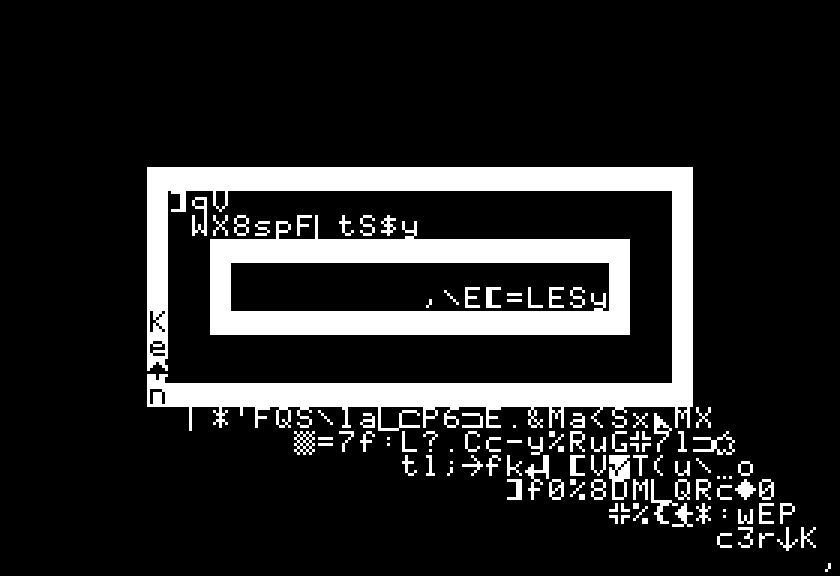Andi McClure is an artist whose primary medium is code. She uses proverbial `1`s and `0`s to make game-like creations, a programming language called Emily, and digital sigils. Andi and I chatted on Skype recently about these various projects and how she conceptualizes her work.
This conversation took place via IM. The full transcript is available for your reading pleasure, but it’s much too long for a newsletter. Instead, I selected some of Andi’s loveliest statements.
Art-Purposed Computing
“Um, I guess I just had this drive to make stuff. I didn’t really question it. I guess at the beginning, when I was making things, I seemed focused on making worlds people could dip into? all my BASIC programs were grossly simple text adventures, and hypercard I was all making point and click adventures (it’s suited for that, it’s technically the program Myst was eventually made in)”
On the games Cyan made before Myst: “you’d explore these bizarre alice-in-wonderland worlds that were full of stuff that reacted in funny ways when you clicked on them.”

Cover art from McClure’s collection Sweet Nothings.
“I do definitely think of myself as an artist. Code happens to be the thing I know how to express myself through, so that’s how I create art. Sometimes I think of the way I approach certain things in life (politics, day to day problems) as being sort of an engineer’s mindset, but if i’m writing code, that’s art. My programming language project is maybe not itself art, but I’m doing it with the goal of making art WITH it, so.”
On trying to distribute “little minimally-interactive systems”: “I’d have this problem that the only way anyone could see this little bitty thing I made, that I spent like a day on and that takes about a minute to two minutes to appreciate fully, was to download this 2MB .exe, and run it on their computer, and half the time have to disable their antivirus or something. So that was awkward.”
The answer to that problem was a website called…
dryad.technology
“dryads are trees that are also girls and that is very compelling to me.”
“i was very specifically trying to find something that evoked a sort of a tension between something organic and wild and something mathematical and technological. like some of the ones i didn’t go with were ‘glitch dot flowers’, ‘fleshy dot rocks’, ‘screaming dot computer’”
“i really really liked the idea of a dryad trying to design technology and what that would look like. i imagined that it would involve lots of crystals. i had this mental image of a tiny plant girl holding a wrench about as tall as she is, looking out over some kind of cryptic crystalline machine.”
“Again I’ve only got two things up so far but the descriptions are all going to be completely inaccurate descriptions as if the little toy I made was some sort of device built by dryads, with a specific purpose which is vaguely incomprehensible to humans but makes a lot of sense to a tree.”
“i do want to make sure this doesn’t feel like trees trying to use human technology and make sense of it. this is trees doing their own thing that may or may not have anything to do with you.”


